Oatmeal butterscotch cookies offer something familiar, but never dull. They’re chewy, rich, and just sweet enough. You’ll get the hearty texture of oats, the golden melt of butterscotch chips, and that unmistakable smell of browned sugar and butter filling the kitchen.
This recipe gives you a reliable, well-textured cookie that works every time. You’ll learn how to build a chewy base, how to balance oats with sugar, and why soft butter matters more than you’d think.
I’ve baked every kind of butterscotch cookie you can imagine—butterscotch pistachio cookies, butterscotch cream sandwich cookies, butterscotch toffee crunch cookies—but this one, this simple oatmeal version, sits at the top of my list. It’s the cookie I make when I want something fast, classic, and satisfying.
You don’t need any extra steps, no chill time, no mixer tricks. Just a bowl, a spoon, and a warm oven.

Butterscotch and Oats Work Well Together in Cookies
Oats carry the weight, butterscotch lifts the flavor
Butterscotch chips melt into the cookie dough in a way that creates small pockets of sweet richness without overwhelming it. Oats, especially old-fashioned rolled oats, bring a textured base that holds its shape and soaks in flavor.
This combination makes the cookie feel substantial without being dense. It’s chewy, but never heavy. The sugar and butter mixture coats every oat, binding it all together while the chips create bursts of sweetness in every bite.
What I like most is the contrast. Each bite gives you that satisfying chew, but with enough softness in the center to make it feel fresh-baked hours later.
If you’ve tried butterscotch toffee crunch cookies, you’ll notice this recipe leans less on crisp edges and more on center texture. It’s less about snap and more about softness.
Ingredients That Hold the Structure and Flavor
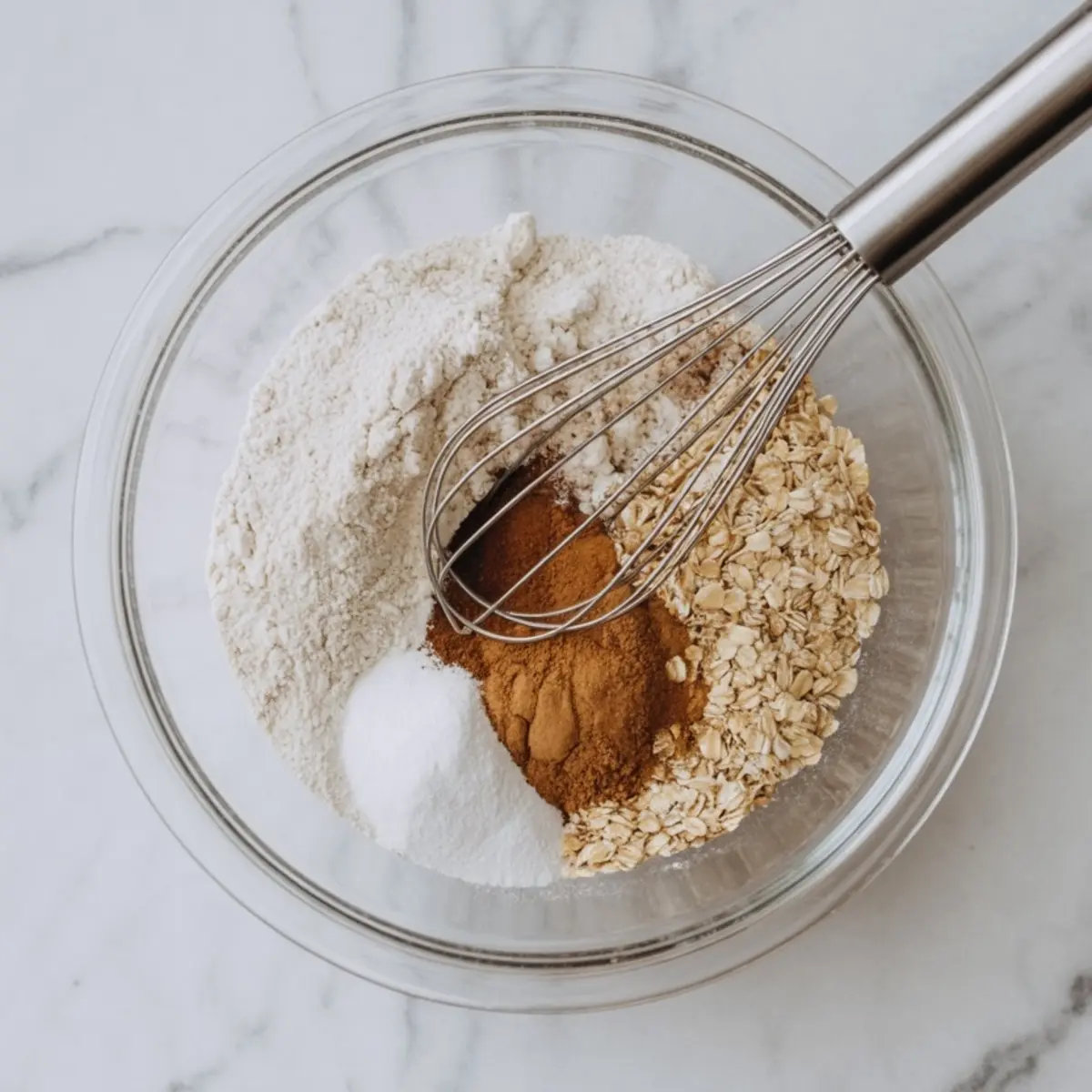
Start with old-fashioned rolled oats. These create a firm, structured dough that doesn’t spread too thin in the oven. Quick oats can turn the texture flat or gummy, especially when paired with melted chips.

Softened butter works best. It should be pliable, not melted. I usually leave it on the counter for about 45 minutes before baking. Cold butter won’t cream properly with the sugars, and melted butter can make the cookies oily.
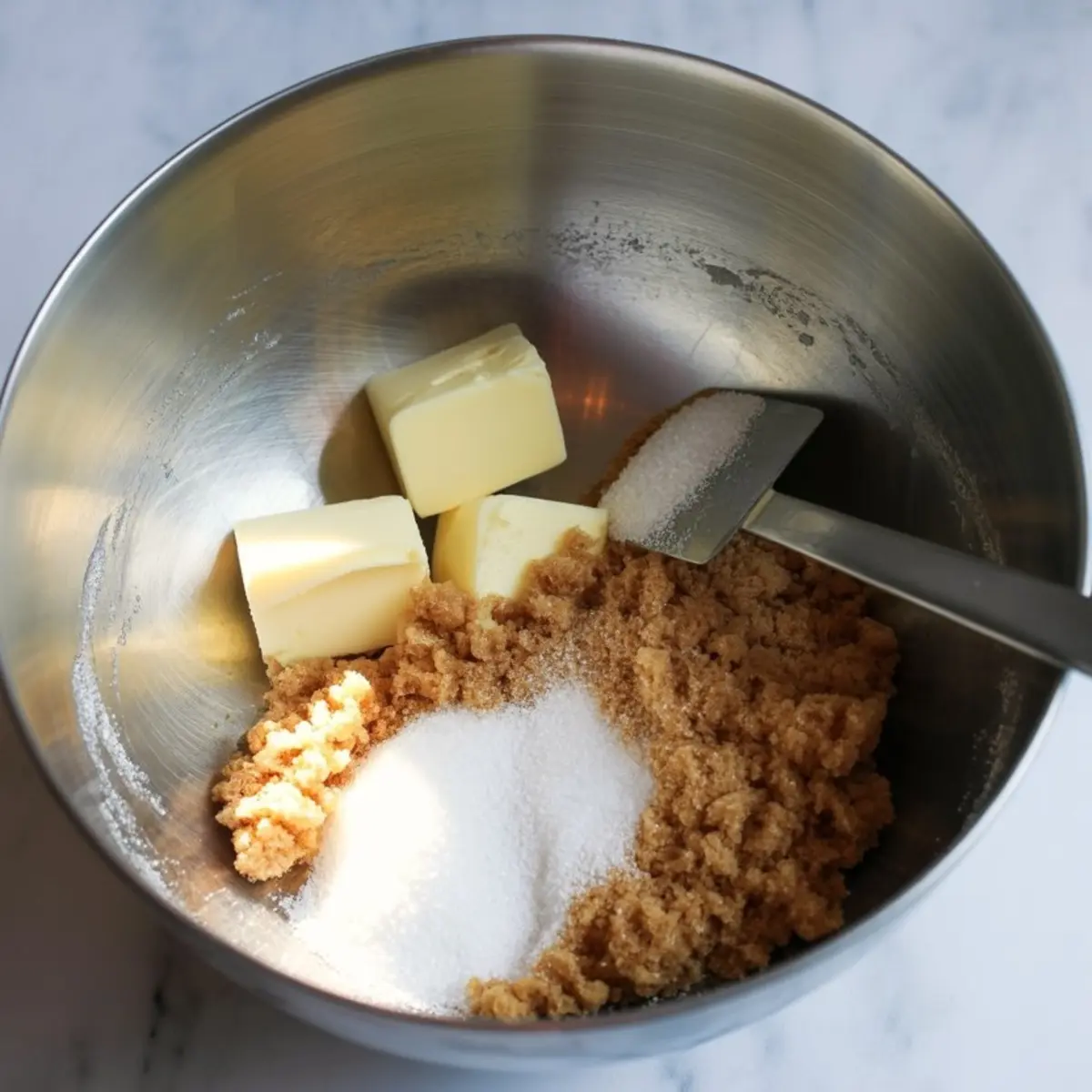
The combination of brown sugar and granulated sugar is important. Brown sugar builds the chew and gives the cookies depth. The white sugar helps the edges brown just enough. Too much brown sugar on its own can make the centers too soft and cakey.
Flaky sea salt is optional, but it helps bring contrast. If you’ve made butterscotch cream sandwich cookies, you know how salt deepens the sweetness. It’s the same idea here. A light sprinkle before baking brings out the caramel tones in the chips.
Comparison Note: Quick Oats vs Rolled Oats in Cookie Texture
I’ve tested both, and the difference shows in the bake.
Quick oats absorb liquid too fast. They break down more easily, which can make the cookies look smooth but taste flat.
Rolled oats keep their shape. They provide structure without compromising softness.
In my notes, batches made with quick oats had thinner, more uniform cookies that lacked chew. The rolled oat version kept that classic lift in the center, with soft pockets surrounded by golden edges. That’s the one I return to.
Steps That Build a Reliable Cookie
Creaming the butter and sugars should take about 2 to 3 minutes. You want the mixture to look fluffy and pale. If it looks greasy, the butter’s likely too soft or overmixed. Scrape the sides of the bowl halfway through to keep the texture even.
Add eggs one at a time. Let each one fully combine before adding the next. This keeps the dough stable. Once the vanilla is mixed in, your wet base should be smooth and glossy, with no visible streaks.
Fold the dry mix in gently. Overmixing can break down the oats. I use a spatula for this step. The dough should look thick but scoopable. It will hold its shape, but still feel soft to the touch.
Fold in the butterscotch chips last. I often keep a small handful aside to press onto the tops of the dough balls just before baking. That step adds a visual cue for what’s inside the cookie and improves the chip-to-surface ratio.

Baking Time, Shape, and Resting the Cookies
Scoop about two tablespoons of dough per cookie. Leave space between each scoop on the tray. These cookies spread slightly, but not much.
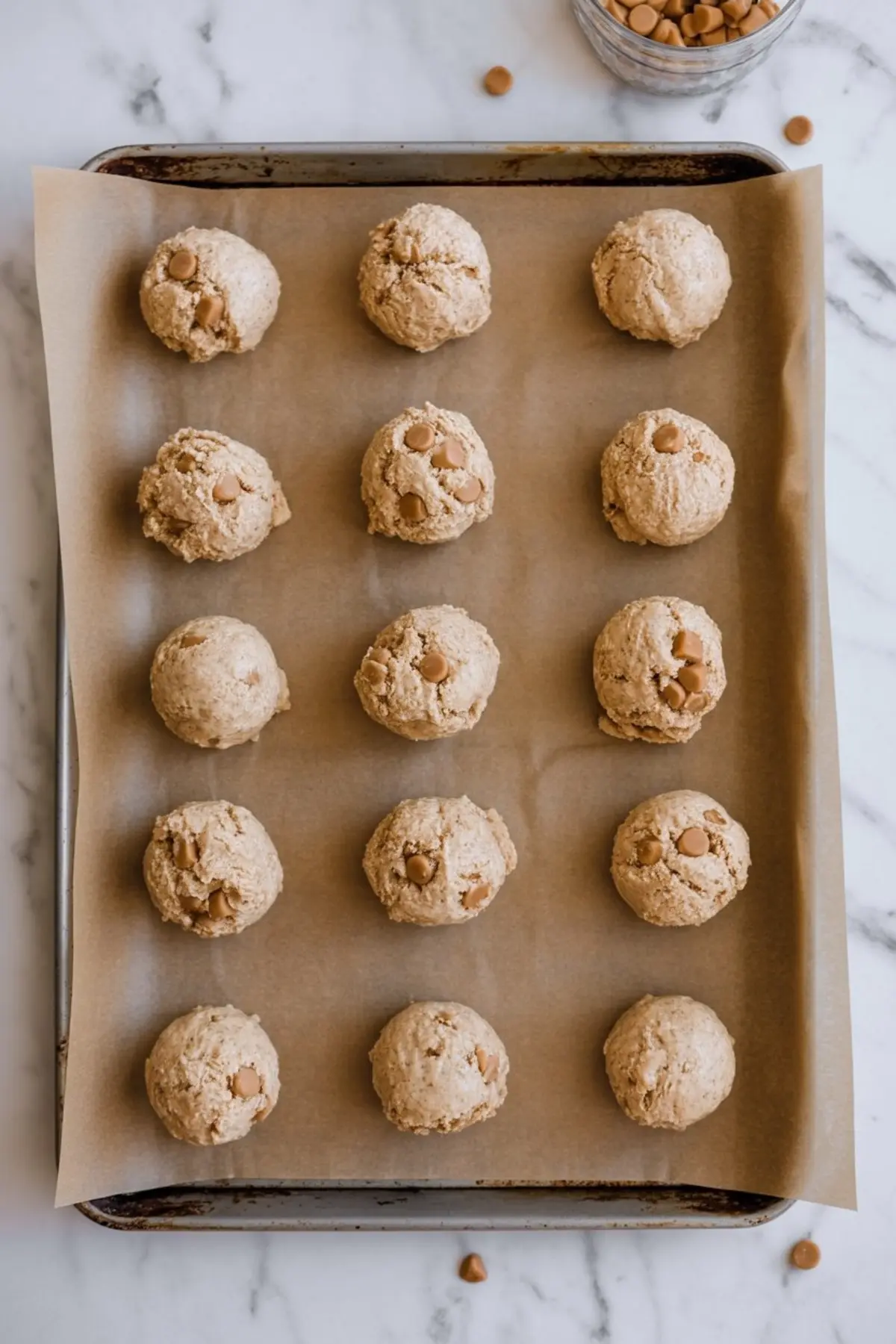
Bake for 9 to 11 minutes. The edges should look golden and set, while the centers stay slightly underbaked. They will finish setting on the tray. Don’t move them too early. I usually give them 5 minutes to rest before using a spatula.
The final texture should be chewy in the center, lightly crisp at the edge. If the bottoms overbrown, try switching the tray position halfway through your next batch.
Here’s a helpful reference if you want to try another texture-forward variation like butterscotch pistachio cookies.
Serving and Storage Advice That Works
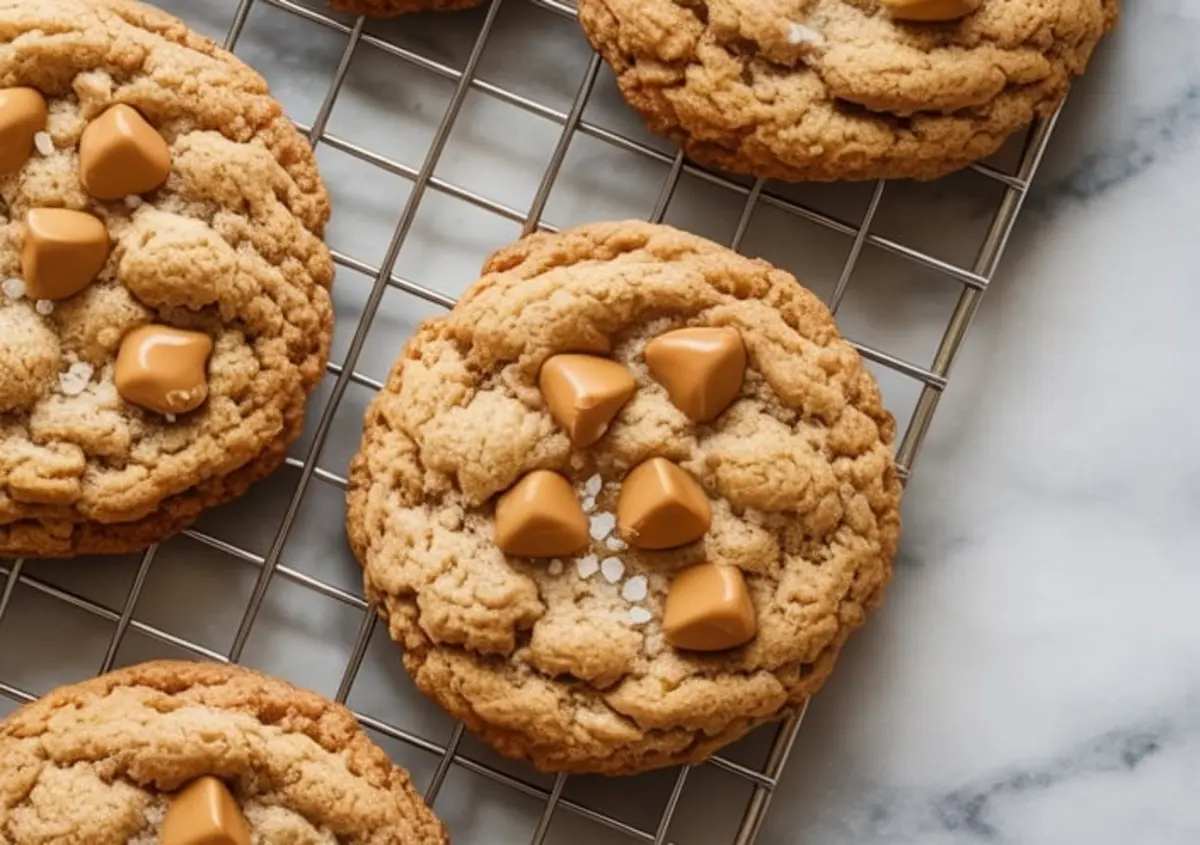
Oatmeal butterscotch cookies hold well at room temperature. Use an airtight tin or resealable bag, and they’ll stay soft for 3 to 4 days.
If you plan to freeze them, let them cool completely and stack with parchment between each layer. I’ve kept them frozen for up to two months. Let them thaw at room temperature—no need to reheat unless you want a warm center.
You can also refrigerate the dough for a day before baking. That option brings more depth to the flavor, but you’ll need to let it soften slightly before scooping.
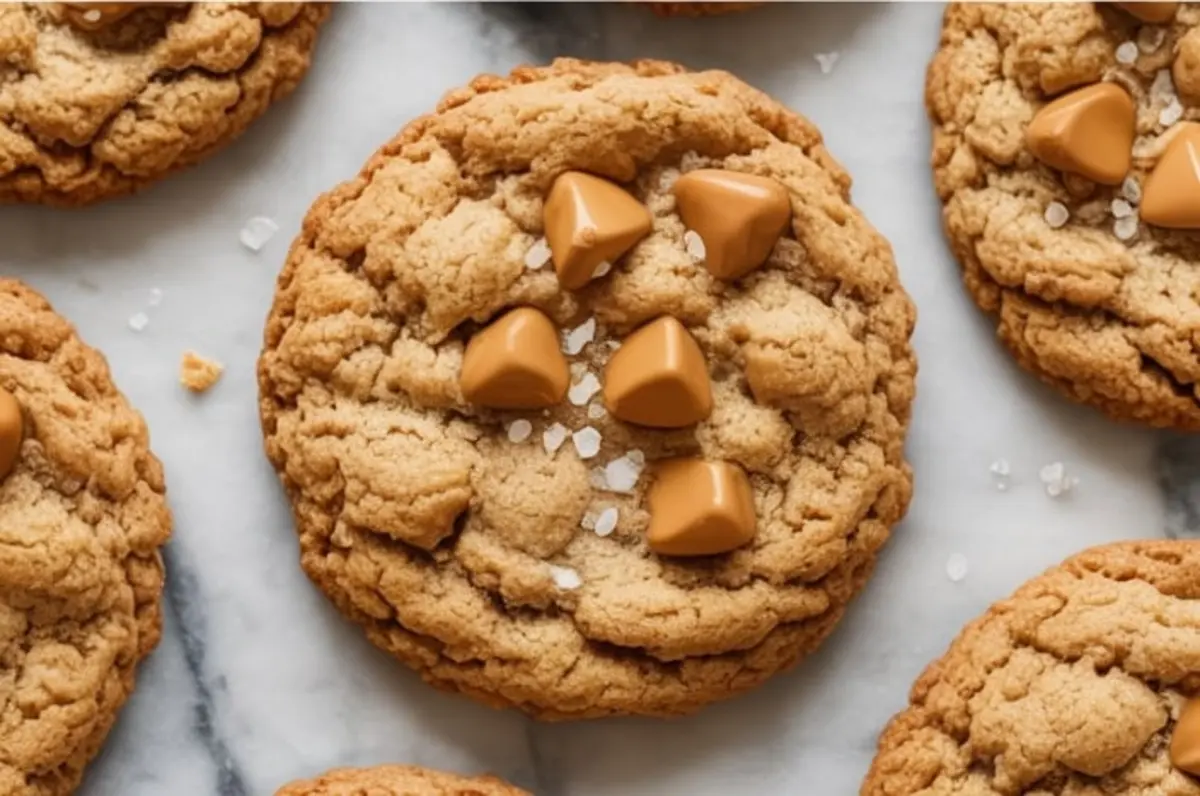
To serve them, I sometimes tuck them into small bakery-style boxes lined with wax paper. They travel well, don’t crumble too easily, and pair beautifully with milky coffee or chai.
Save and Share Your Cookie Stories
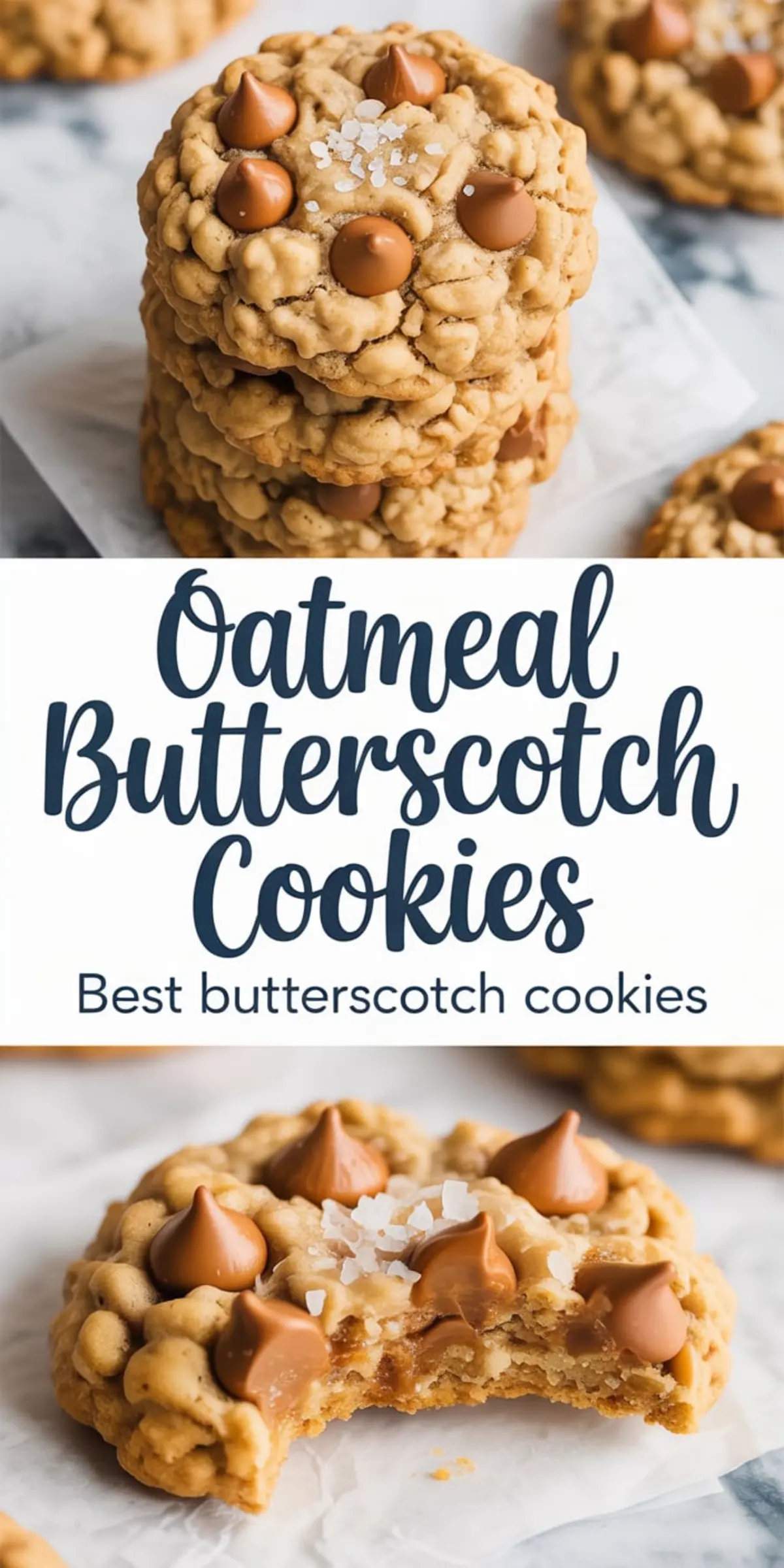
If you’ve been searching for a cookie that’s chewy, buttery, and easy to make on a weekday afternoon, this is it.
I return to this recipe often. It never fails, and it never gets old. If you try it, I’d love to hear how it went. Did you press the sea salt? Did you swap the chips? Tell me what worked for you.
Save this post to your Pinterest board so you can find it again next time the craving hits.
And feel free to share your questions or tips in the comments. It’s always better when we bake together.
Oatmeal Butterscotch Cookies

Oatmeal butterscotch cookies are chewy, buttery, and loaded with sweet butterscotch chips. I bake them often because the flavor of butterscotch blends perfectly with hearty oats. Some recipes call them oatmeal scotchies, others butterscotch oatmeal cookies or even scotchies cookies, but they all use the same classic mix of oats and butterscotch. I’ve tested oatmeal butterscotch chip cookies and chewy oatmeal cookies variations, and this one always hits the right balance of texture and sweetness. Among butterscotch cookies recipes, oatmeal butterscotch cookies stand out as simple, comforting, and a go-to bake when you want something homemade.
Ingredients
- 1 ½ cups all-purpose flour
- 1 tsp baking soda
- ½ tsp ground cinnamon (optional)
- ½ tsp salt
- 2 cups old-fashioned rolled oats
- 1 cup (2 sticks) unsalted butter, softened
- 1 cup packed brown sugar
- ½ cup granulated sugar
- 2 large eggs
- 2 tsp pure vanilla extract
- 1 ¾ cups butterscotch chips
- Flaky sea salt for topping (optional)
Instructions
- PREHEAT THE OVEN: Set oven to 350°F (175°C) and line two baking sheets with parchment paper or silicone mats.
- MIX DRY INGREDIENTS: In a medium bowl, whisk together flour, baking soda, cinnamon, and salt. Stir in the oats and set the bowl aside.
- CREAM THE BUTTER AND SUGARS: In a large bowl, beat softened butter, brown sugar, and granulated sugar until the mixture is light and fluffy, about 2–3 minutes.
- ADD EGGS AND VANILLA: Beat in the eggs one at a time, scraping down the sides of the bowl between additions. Mix in the vanilla extract until fully incorporated.
- COMBINE DRY AND WET: Gradually add the dry mixture to the butter mixture. Mix on low speed or by hand just until no dry spots remain. Do not overmix.
- FOLD IN THE BUTTERSCOTCH CHIPS: Use a spatula to fold in the butterscotch chips evenly. Reserve a small handful if you’d like to press some on top of the dough before baking.
- SCOOP THE DOUGH: Portion out the dough using a medium cookie scoop (about 2 tablespoons) and place on the prepared baking sheets, spacing cookies 2 inches apart.
- TOP WITH SEA SALT (OPTIONAL): Lightly sprinkle each dough ball with flaky sea salt for added contrast and flavor depth.
- BAKE: Bake for 9–11 minutes until edges are golden and centers look slightly underbaked. Cookies will set as they cool.
- COOL: Allow cookies to rest on the baking sheet for 5 minutes before transferring to a wire rack to cool completely.
Notes
For best texture, use old-fashioned rolled oats and avoid quick oats. Cookies keep well in an airtight container at room temperature for 3–4 days or can be frozen for up to 2 months.
Nutrition Information
Yield
30Serving Size
1Amount Per Serving Calories 142Total Fat 4gSaturated Fat 3gTrans Fat 0gUnsaturated Fat 1gCholesterol 13mgSodium 119mgCarbohydrates 24gFiber 1gSugar 16gProtein 2g

